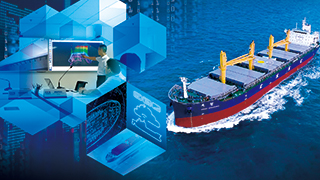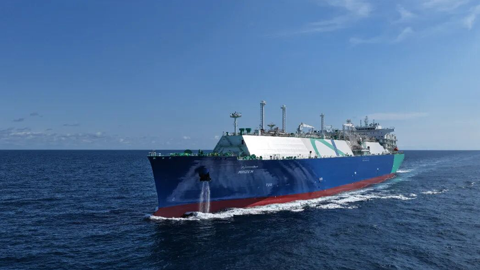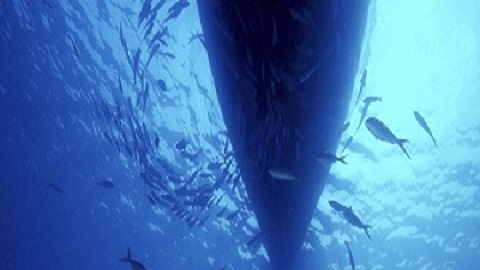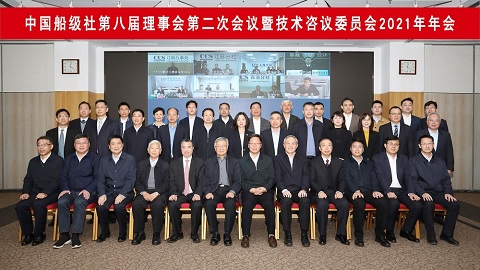China Classification Society (CCS) has been carrying out comprehensive research on the application of ammonia fuel in ships since 2021, and its research scope covers key links in the entire industry chain, including ammonia fuel preparation, transportation, water application, etc. CCS has made significant achievements, and preliminarily established relevant service capabilities and products.
By Lei Wei CCS Wuhan Rules &
Research Institute

China Classification Society (CCS) has been carrying out
comprehensive research on the application of ammonia fuel in ships since 2021,
and its research scope covers key links in the entire industry chain, including
ammonia fuel preparation, transportation, water application, etc. CCS has made
significant achievements, and preliminarily established relevant service
capabilities and products.
Main Work
CCS has conducted scientific research and service on the
application of ammonia fuel in ships, mainly including the establishment of
rules/regulations, approval of ships and systems, risk analysis, and carbon
intensity assessment.
In terms of the rules/regulations establishment, CCS has mainly
carried out research on safety technical requirements for the application of
ammonia fuel in ships, and developed technical rules and regulations; CCS has
also participated in the drafting and formulation of international rules and
technical documents related to ammonia fuel of IMO and IACS;
In terms of the approval of ships and systems, CCS has mainly
carried out classification service and AIP for typical ammonia-fueled vessels,
ammonia fuel supply system, ammonia engine AIP and product certification, etc.;
In terms of risk analysis, CCS has mainly carried out
comprehensive risk analysis of typical ammonia-fueled vessels, risk analysis of
ammonia fuel supply system, etc.;
In terms of carbon intensity assessment, CCS has mainly carried
out research on ammonia fuel preparation technology, full life cycle greenhouse
gas emission intensity, ammonia fuel emission reduction verification, etc.
Achievements
As for the rules/regulations, CCS successfully released the
"Guidelines for Ships Using Ammonia Fuel" in 2022, and the "Life
cycle Greenhouse Gas (GHG) Emission Intensity Calculation and Certification
Guidelines for Marine Fuels" in 2023. In 2024, it undertook the
preparation of the "Interim Rules for Technology and Survey of
ammonia-fueled vessels" of China Maritime Safety Administration of the
Ministry of Transport;
it has fully participated in the drafting and finalization of
the IMO "Interim Guidelines on Safety for Ships Using Ammonia Fuel",
and also presided over the drafting of IACS UR H2 "Design and Test of
Ammonia Treatment System for Ammonia-fueled Vessels";
As for ship classification and system approval, the first
5,500HP ammonia-fueled tugboat and the 25,000m3 ammonia carrier (using cargo as
fuel) in China have been classed by CCS. At the same time, CCS has completed
the AIP for 310,000-ton ammonia-fueled VLCC, 305,000-ton ammonia-fueled VLCC,
74,000-ton ammonia-fueled bulk carrier, 85,000-ton ammonia-fueled bulk carrier,
etc.; in terms of system approval, CCS has completed the design schemes for
liquid ammonia fuel supply system of Dalian Shipbuilding Industry Co., Ltd. and
the ammonia fuel supply system of COSCO Shipping Heavy Industry Technology
(Weihai) Co., Ltd.
As for risk assessment, CCS has established the ammonia fuel
risk assessment capability, completed HAZID and HAZOP analysis of the 5,500HP
ammonia-fueled tugboat, and completed HAZOP analysis of the liquid ammonia fuel
supply system of Dalian Shipbuilding Industry Co., Ltd. and the ammonia fuel
supply system of COSCO Shipping Heavy Industry Technology (Weihai) Co., Ltd.;
As for carbon intensity assessment, CCS has completed the
calculation and assessment of the full life-cycle carbon emission intensity of
ammonia fuel prepared in different ways in China.
Service Scope
Currently, CCS has initially established a series of service
capabilities and products in the entire ammonia fuel industry chain (preparation
→ transportation → waterborne application), mainly including:
○ Training/compliance consultation on the rules for
ammonia-fueled vessels/ammonia carriers;

Fig.1 CCS successfully
published the Guidelines for Calculating and Certifying Life Cycle Greenhouse
Gas Emission Intensity of Marine Fuels in 2023
○ Classification and statutory survey of ammonia-fueled
vessels/ammonia carriers;
○ Economic assessment of ammonia-fueled system;
○ AIP of ammonia-fueled vessels;
○ Quantitative risk assessment on the design scheme of
ammonia-fueled vessels;
○ Risk assessment on the arrangement and system design of
ammonia-fueled vessels;
○ Assessment and certification of greenhouse gas emissions from
ships using ammonia fuel;
○ Issuance of full life cycle labels for ammonia fuel;
○ Verification of ammonia fuel emissions reduction;
○ Analysis of incremental operating costs for ammonia-fueled
vessels/fleets, etc.
Note: If you need to reprint, please indicate the source of the information.













